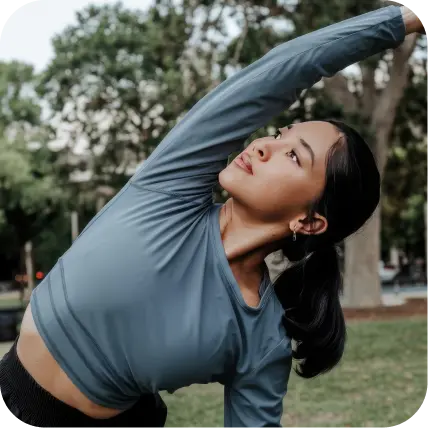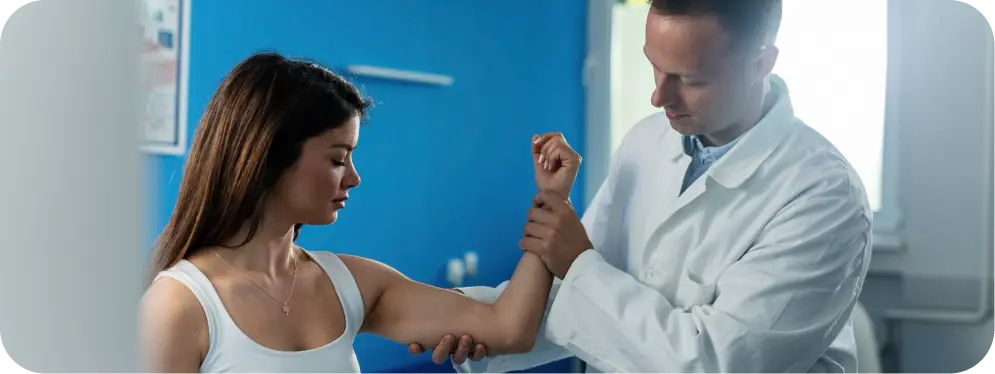General Points
- What Is a Shoulder Labral Tear?
- Types of Labral Tears
- Symptoms of a Labral Tear
- Diagnosing a Labral Tear
- Treatment Options for Labral Tears
- Arthroscopic Labral Repair: Why It’s the Gold Standard
- Recovery Timeline After Arthroscopic Labral Repair
- FAQ About Labral Tears
- How to Choose the Right Surgeon for Arthroscopic Labral Repair
- Conclusion
What Is a Shoulder Labral Tear?
Your shoulder is one of the most mobile joints in the human body. To stay both stable and flexible, it relies on a soft cartilage rim called the glenoid labrum. The labrum deepens the socket, cushions forces, and anchors ligaments.
A shoulder labral tear occurs when this rim is damaged or detached. The result? Pain, instability, and mechanical symptoms like clicking or catching inside the joint. In patients under 65, tears often come from sports injuries, repetitive overhead motions, or a shoulder dislocation.

Types of Labral Tears
Labral tears vary depending on their location and shape:
SLAP Tears (Superior Labrum Anterior to Posterior)
- Type I: Fraying without detachment
- Type II: Detachment of the labrum and biceps anchor
- Type III: Bucket-handle tear, biceps intact
- Type IV: Tear extending into the biceps tendon
Common in overhead athletes, especially throwers.
Bankart Lesions
- Occur in the anteroinferior labrum after anterior dislocations
- Strongly linked to recurrent shoulder instability
Posterior Labral Tears
- Found on the back of the shoulder socket
- May cause posterior instability and pain with pushing movements
Panlabral or 270° Tears
- Involve multiple regions of the socket, sometimes nearly circumferential
- Challenging but repairable arthroscopically (Journal of Shoulder and Elbow Surgery, 2021)
GLAD Lesions (Glenolabral Articular Disruption)
- Partial anterior labral tear with underlying cartilage damage

Symptoms of a Labral Tear
- Deep shoulder pain, especially with overhead activity
- Clicking, catching, or popping in the joint
- Feeling of instability or “giving way”
- Night pain
- Weakness in lifting or throwing
- Loss of range of motion
Diagnosing a Labral Tear
Clinical Examination
Your surgeon will review history (trauma, sports) and perform specific tests such as O’Brien’s, Speed’s, or crank tests. While no single exam is definitive, multiple positive results raise suspicion (British Medical Bulletin, 2018).
X-Rays
Do not show the labrum directly but help identify bone loss, dislocations, or associated injuries.
MRI / MR Arthrogram
Contrast MRI highlights detachment or fluid around the labrum. Sensitivity improves with intra-articular contrast. New deep learning tools may soon make diagnosis even more accurate (arXiv, 2024).
Diagnostic Arthroscopy (Gold Standard)
Direct visualization remains the most reliable way to confirm and repair a labral tear in the same procedure.
Treatment Options for Labral Tears
| Treatment | Pros | Pros |
| Physical Therapy & Injections | Non-invasive, first-line for small tears | May not restore stability, slower relief |
| Debridement | Removes frayed tissue for pain relief | Doesn’t restore shoulder stability |
| Arthroscopic Labral Repair | Restores anatomy, stability, long-term outcomes | Surgical risks, rehab needed |
| Biceps Tenodesis/Tenotomy | Reduces biceps tension, better for older patients | Alters biceps mechanics |
| Labral Reconstruction | Option if tissue is poor or revision case | Technically complex, limited long-term data |
| Latarjet / Bone Augmentation | Effective in bone loss + instability | More invasive, graft risks |
Arthroscopic Labral Repair: Why It’s the Gold Standard
What It Is
A minimally invasive shoulder surgery using a camera and small instruments. Surgeons reattach the torn labrum with suture anchors, restoring stability.
Why It’s Often Best
- Preserves native anatomy
- Minimally invasive with smaller incisions and quicker rehab
- Addresses instability directly
- Durable outcomes: 10-year studies show high satisfaction and low recurrence (PMC, 2021)
- Comprehensive evaluation: Arthroscopy allows inspection and repair of all shoulder structures
Risks
- Stiffness or adhesions
- Recurrent instability if bone loss is significant
- Rare nerve or anchor complications (PMC, 2015)

Recovery Timeline After Arthroscopic Labral Repair
- Weeks 0–4: Arm in sling, gentle passive motion
- Weeks 4–8: Active range of motion begins
- Weeks 8–12: Strengthening phase
- Months 4–6: Gradual return to sports and overhead activity
FAQ About Labral Tears
Can a labral tear heal without surgery?
Small frays may improve with therapy, but true detachments rarely heal on their own.
Is labral repair a major surgery?
It is minimally invasive and often outpatient. Most patients return to normal activity in 4–6 months.
What happens if I ignore a labral tear?
Unrepaired tears can lead to chronic instability, repeated dislocations, and early arthritis.
How to Choose the Right Surgeon for Arthroscopic Labral Repair
- Specialization: Fellowship-trained in sports medicine/shoulder surgery
- Experience: High volume of labral repairs, including complex and revision cases
- Modern Techniques: Knotless anchors, rotator cuff–sparing portals
- Clear Outcomes: Willing to share success and complication rates
- Close follow up and patient care from surgeon and his team

Conclusion
A shoulder labral tear can be painful and limit your life. Fortunately, with modern arthroscopic labral repair, most patients under 65 regain stability and return to the activities they love. The key is an accurate diagnosis and a skilled surgeon who specializes in labral repair.
👉 If you’re ready to take the next step, schedule a consultation online or call our office today to meet with a true labral tear specialist.


